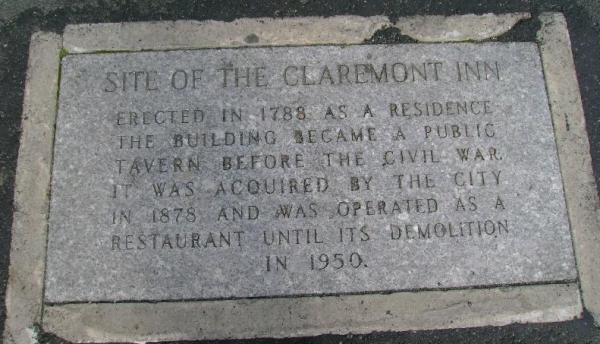In 1794, vast tracts of local land were owned by Nicholas de Peyster who had bought them from a Dutch farmer, Adrian Hooglandt. In 1796, he sold the upper part to one George Pollock. (It is thought that it was his son, St.Clair is the 'amiable child' who is buried in the so-marked grave having died on 15-July-1797). Pollock fell on hard times and had to sell up in 1802. Among the following owners were John Bartow Provost and Joseph Alston. In 1807, the estate was bought by the famous navigator Michael Hogan - it was he who divided the property calling the upper part Claremont (after County Clare in Ireland, from whence he came, or after the Duke of Clarence later to become King William IV. Hogan had served with him in the Royal Navy) and the lower part Monte Alta. Hogan was practically ruined during the war with the British in 1812 and, on 12-Feb-1821, Joel Post bought the estate from the trustees and the Post family was identified with various parts of the estate for nearly 90 years. When Joel died in 1835, his sons Edward and Alfred C. Post took it over. At that time, the estate stretched from 107th St. up to 131st St. In 1872, the City took most of the land for Riverside Park and the remaining lots, from 121st 127th Streets (with an Eastern boundary comprising about half the block front of what is now Claremont Avenue) were sold as 156 city lots, most of which were purchased by the surviving members of the Post family. Little by little the lots were sold for development until the last lot passed out of Post hands in mid-December 1909.
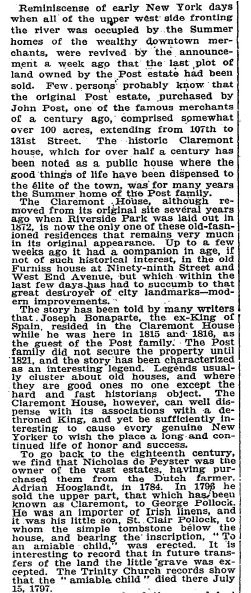 |
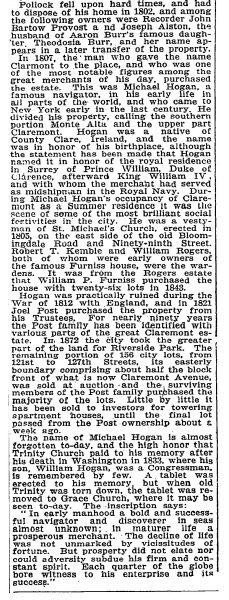 |
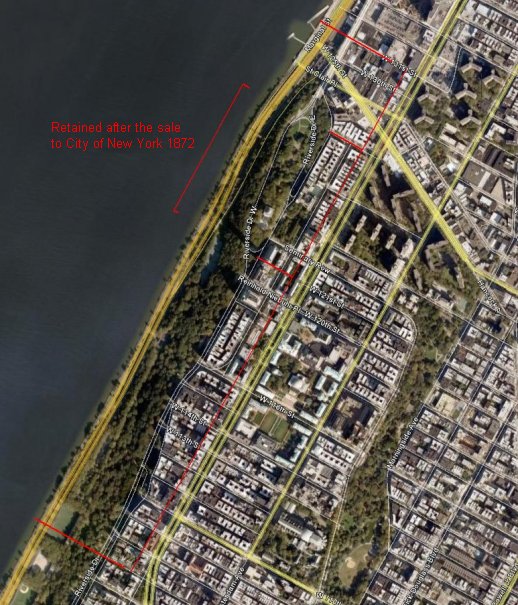 |
| New York Times, 26 Dec 1909 | |
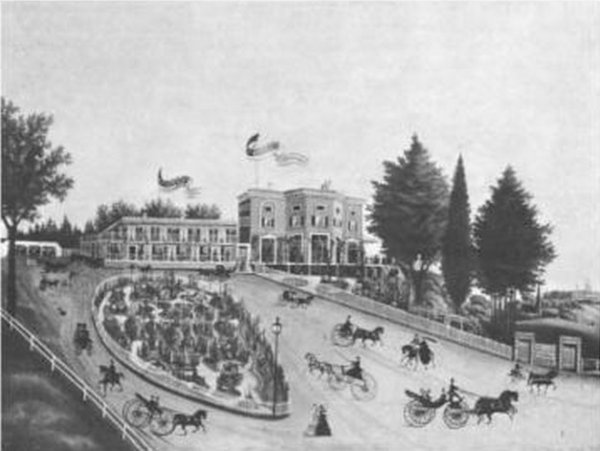 |
| Unattributed painting | |
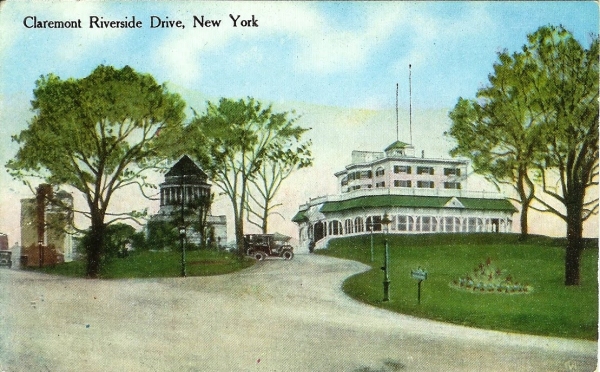 |
| Looking towards Grant's Tomb | |
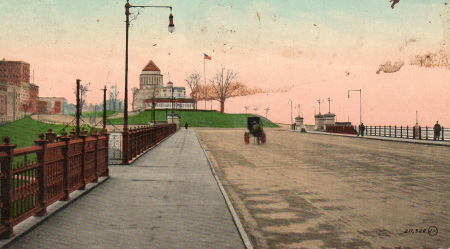 |
| ... another | |
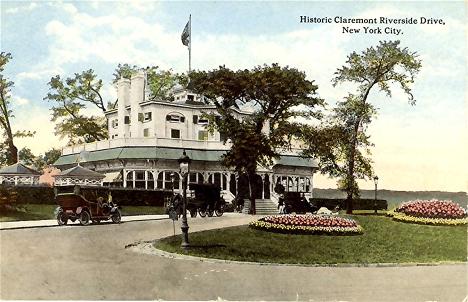 |
| A view from the East | |
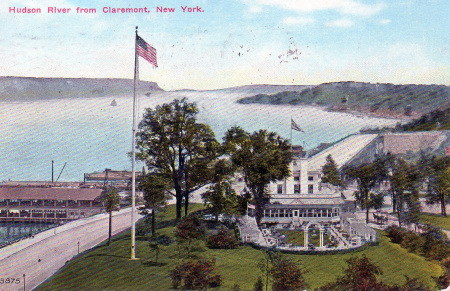 |
| Overlooking the Hudson | |
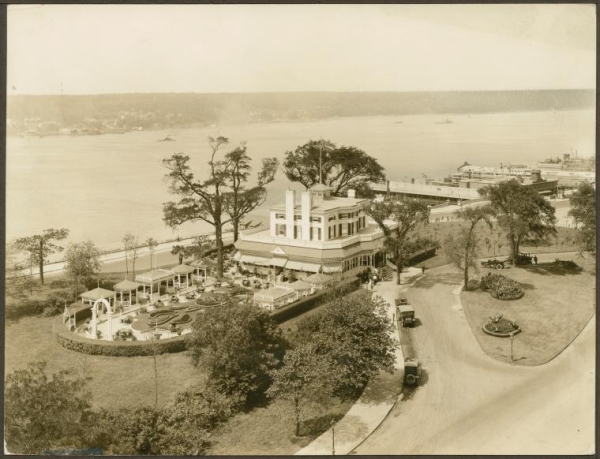 |
| The house (restaurant) in the 1930s | |
By the end of the 19th century, the City of New York had acquired the estate as part of the development of Riverside Park. Leased to a hotelier, the Inn prospered as the place to stay if one were to visit the newly constructed Grant's Tomb, and its grand garden became the place to dine for weary downtowners travelling northward by carriage. As Prohibition slowed the Inn's bar-based profits and then the Depression prevented any return to its former glory, Parks Commissioner Robert Moses eventually tried to convert the inn to a moderate beer garden. Complaints of late night revelry and the questionable morality of the government running a drinking establishment soon signaled the beginning of the end. By the 1940's a fire had damaged a good portion of the building, and there was even a plan to move the Hamilton Grange to the site on which the Claremont sat in 1950. But all was lost when a mysterious final fire destroyed what was left of the Claremont in 1951. A playground, overlooking the West Side Highway and the Riverside Drive Viaduct at 125th Street, now stands in its place.
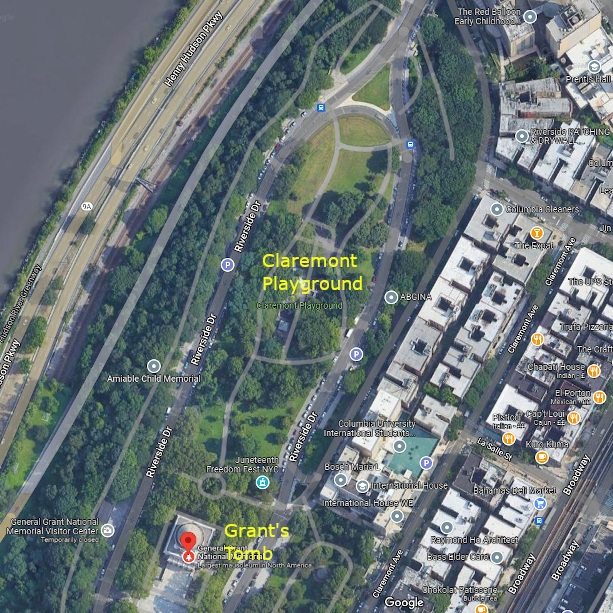 |
| The Claremont Playground | |
The site of the estate is now more famous for being that of Grant's Tomb, the tomb of General Ulysses Simpson Grant (1822–1885), 18th President of the United States, and his wife, Julia Dent Grant (1826–1902).
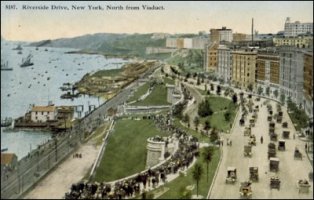 |
| Riverside Drive | |
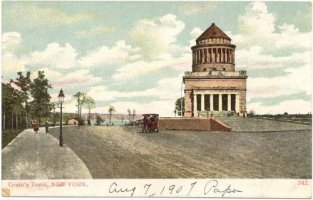 |
| Grant's Tomb in 1907 | |
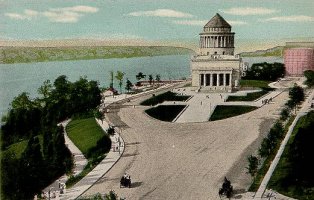 |
| An early picture | |
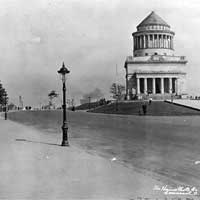
Grant's Tomb in 1909 |
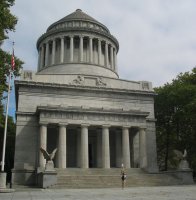
Grant's Tomb in 2004 |
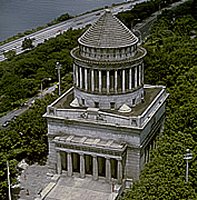
An aerial view |
The structure is situated in a prominent location in Riverside Park (at the junction of Riverside Drive and W 122 St) overlooking the Hudson river.
End of Note.
|










